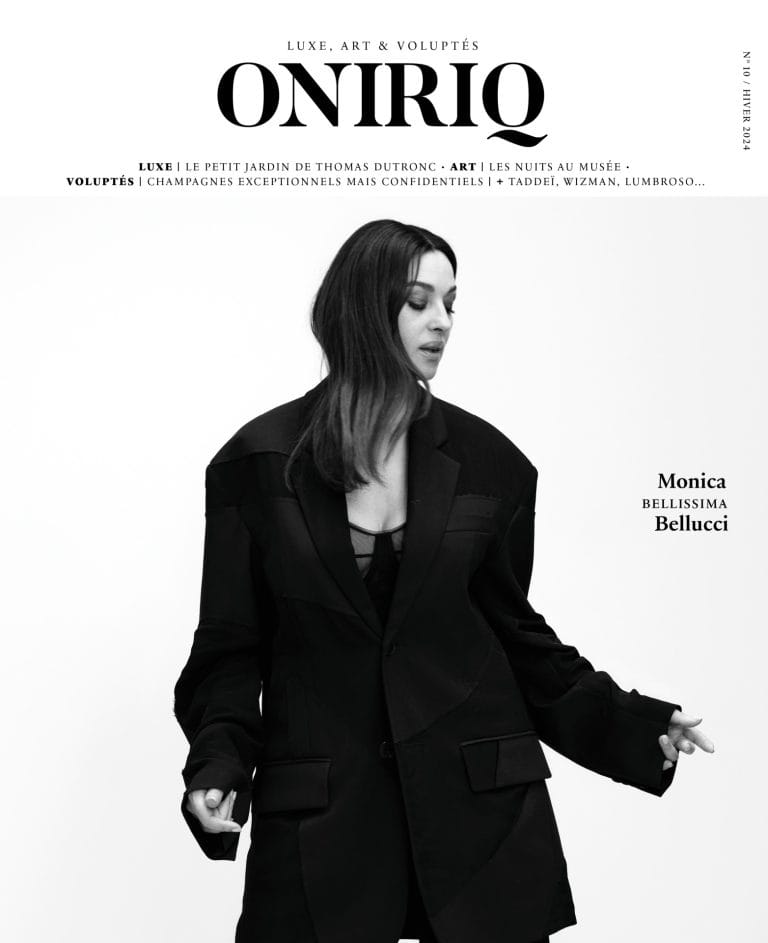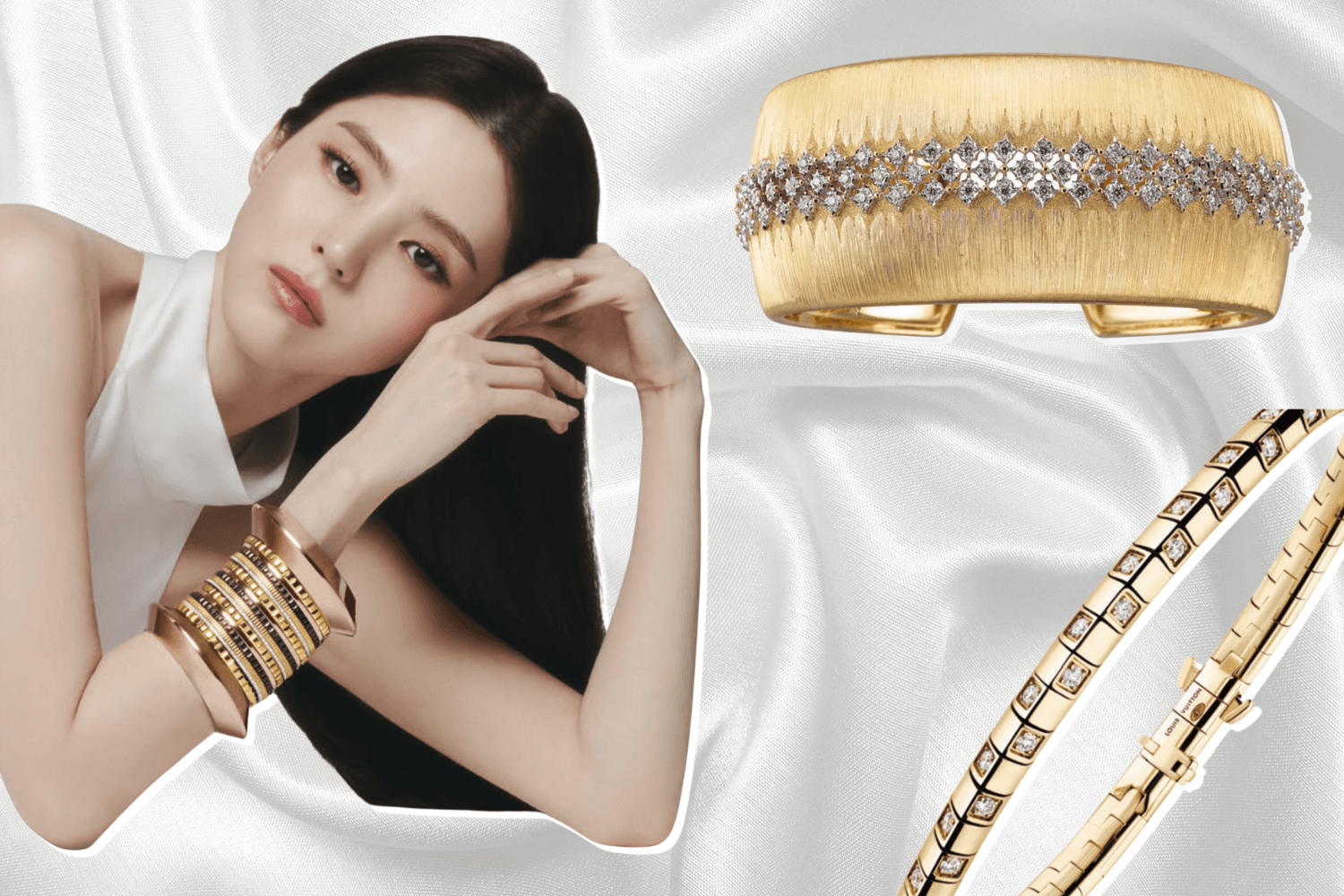Translated by Bethszabee Garner
Big names on the Place Vendôme and independent jewelers alike adorn themselves with yellow gold to create their heritage collections and new lines, breathing new aesthetic into their classics and original designs.
However, working with this rare metal dates back to ancient time. Its exploitation has been attested since the fifth millennium BC in Varna, Bulgaria. Ancient Egypt is famous for its use of gold. The finely chiseled ornaments of the pharaohs are wonderful examples of the skill of Egyptian craftsmen. In ancient times, the Greeks and Romans mined gold for adornment and as currency. On the other side of the world, the Incas and the Aztecs used it to honor their gods.
So how can we explain this recent craze for this metal? In times of geopolitical uncertainty and when conflicts break out in the four corners of the globe, yellow gold is a safe haven. Transportable in case of trouble, this metal transformed into jewelry protects its lucky owners, who are able to flee quickly with all their wealth on them. This was the case during the Second World War, Russia's invasion of Afghanistan and the Iranian revolution... It's hard not to draw a parallel with current events.
The current vogue for opulent gold jewelry is a reminder of this immutable principle: when tensions reach a certain level of intensity, the precious metal automatically regains its status as a safe haven, despite the dizzying rise in its price. Its price has doubled since 2019, accelerating since last year to reach €2,526 per ounce in recent months.
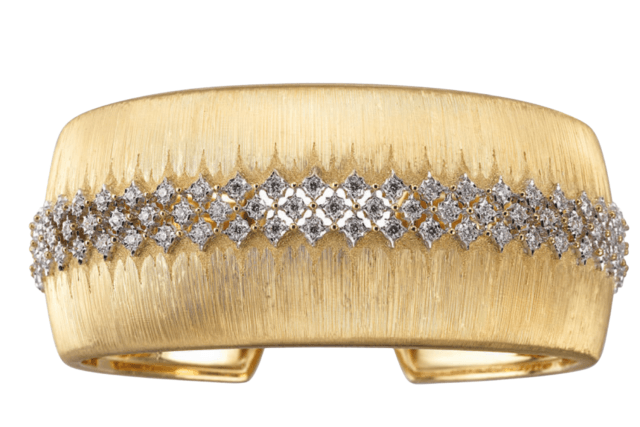
This surge has not cooled the enthusiasm of jewelers, who are offering a host of sculptural and massive yellow gold jewelry pieces in their collections. The whims of style may also explain this renewed love for this buttercup-hued metal.
When women once again want to dress up and therefore adorn themselves, they want it to be noticed. They then have an appetite for XXL yellow gold jewelry sets. This trend is reminiscent of the aesthetic vocabulary of the late 1930s and early 1940s, while evoking the opulence that characterized the jewelry of the 1980s.
Founded in 1895 by Efthymios Zolotas, the eponymous Greek jewelry brand offered in the eighties, jewelry in chased or decorated 18-carat gold or hammered 22-carat gold. These pieces, which are very heavy, sometimes weighing more than 500 grams, have enjoyed a strong resurgence in popularity over the past two years. Today, jewelers, who like to weave, openwork or engrave gold, do not hesitate to mix their golden creations with white diamonds.
Icons clad in gold
Designed a century or a year ago, some jewelry has acquired the status of a timeless jewel, recognizable at first glance. In order to maintain their status as cult jewelry, these creations are regularly revisited to continue to seduce. And today they are displayed in yellow gold, set or not with diamonds, like the Quatre jewel by Boucheron, designed twenty years ago.
Trinity by Cartier, which is celebrating its 100th anniversary this year, needs no introduction. These three intertwined gold rings have become a jewelry legend. Throughout its long life, Trinity has been constantly reinvented. For its anniversary, the jeweler at 13 rue de la Paix is unveiling the famous three rings with square corners known as “cushions” on rings, bracelets and pendants. Cartier is also reissuing the original Trinity bracelet and ring in an XXL variation.
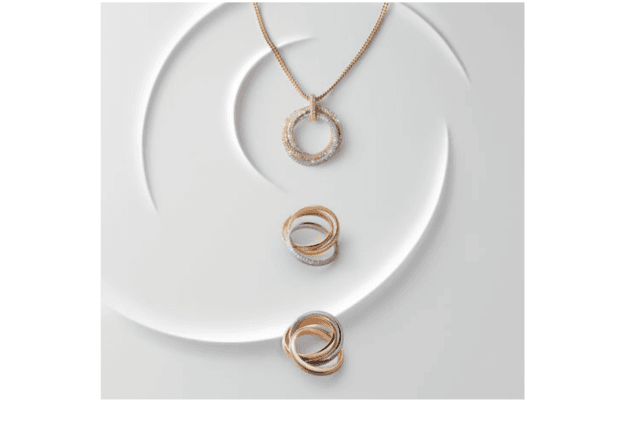
Gold carving remains the unmistakable signature of the Milanese jeweler Buccellati. His Macri jewelry is iconic. The metal thus worked this way, captures and reflects the light, offering it its most beautiful reflections. The engraving technique used, called rigato, consists of creating parallel lines on the surface of the metal to obtain a dazzling effect. The diamonds, set in small rosettes, enrich and enhance this work. The same is true of Bvlgari's Tubogas jewels.
During the Second World War, as the supply of both platinum and diamonds became difficult, the Italian jeweler began to favor yellow gold and developed a new technique inspired by industrial gas pipes industrial gas pipes and car exhausts. In 1948, the first Serpenti watches were born: geometric dials mounted on Tubogas bracelets that wrap around the wrist.
A cult favorite since the 1970s, the Tubogas aesthetic is back today in sixteen new designs: bracelets, choker necklaces in all-gold or diamond-set versions, or even Serpenti pieces that continue to explore the ideal association of the reptile figure and the undulating precious mesh that has made Tubogas so successful to this day.
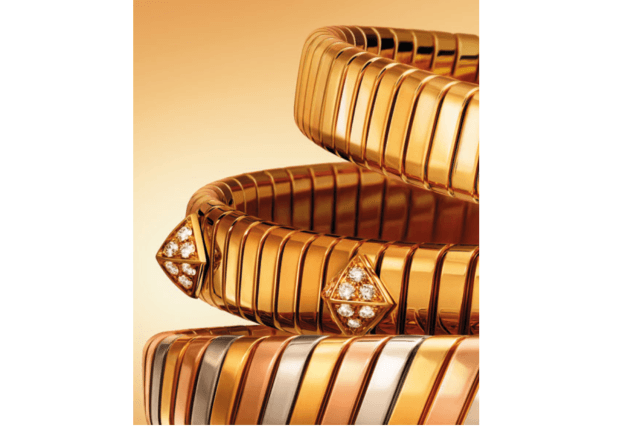
An emblematic motif of the company, the golden bead has brightened up Van Cleef & Arpels jewelry creations since the 1920s. This year, the Perlée line plays on asymmetry with a bracelet that makes bands of diamonds dance between golden beads and a ring composed of two rings: one in mirror-polished gold, the brand's signature craftsmanship, the other set with round diamonds. Precious geometry is what Chopard is all about.
The emblematic design of the Ice Cube collection combines urban elegance and modernity with its square facets meticulously crafted like ice mirrors interspersed with diamonds. A choker necklace and a bracelet combining the cube shape with the shine of the incredibly flexible diamond have just been unveiled, showcased in a new campaign featuring Bella Hadid.
By imagining Move, Valérie Messika opened a formidable breach in the field of jewelry with three diamonds fixed on an axis which undulate with the wearer's movements. She has now revisited her iconic piece in an XXL version with the So Move line, with a design featuring even more assertive proportions, necklaces, earrings, rings for two fingers and bracelets. And all combinations are possible: the all-gold Move motif and its mobile diamond, the halo paved with gems of the entourage... The noble metal enhances the shine of the diamonds of each piece, recognizable by its large, polished gold surfaces.

New gold-edged products
“The Louis Vuitton Damier symbolizes the quintessence of modern jewelry,” says Francesca Amfitheatrof, artistic director of the brand's jewelry and watchmaking collections, who has just created a new piece. Called Le Damier, it transforms the emblematic geometric motif of the brand, created in 1888, into a precious version.
The collection, consisting of rings, necklaces, bracelets and earrings with sloping sides in precious metal and brilliant-cut diamonds, comes in two distinct styles: one with two rows of white gems, the other, more graphic, with four.
Across the Channel, the English jeweler Graff, world-famous for showcasing the world's most beautiful gemstones, gives full credit to yellow gold and diamonds through its Laurence Graff Signature collection. Rings, pendants, hoop earrings and now unisex bangle bracelets are designed in faceted gold reminiscent of the cut facets of a gem, studded with diamonds.
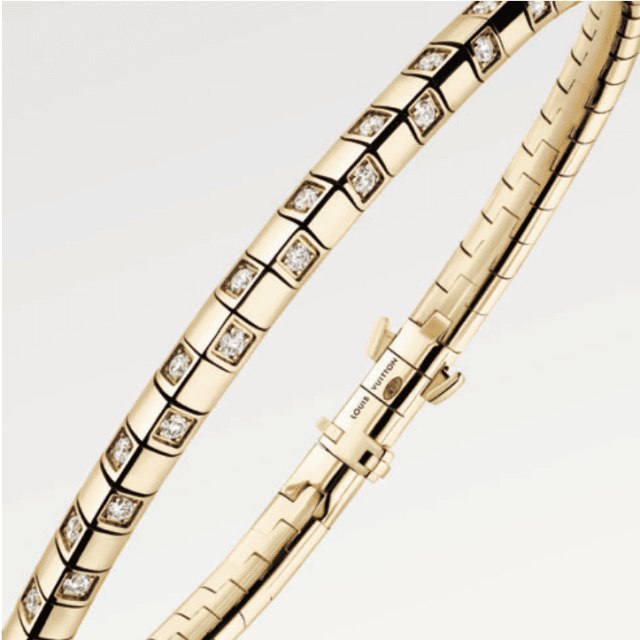
The same appeal for the noble material with buttercup reflections at Tiffany & Co. The American jeweler is now unveiling new variations of the collection designed in collaboration with Pharrell Williams. The artist, who is also the artistic director of Louis Vuitton's menswear collection, has focused on the shape of Poseidon's trident to design the Tiffany Titan by Pharrell Williams.
Inspired by the structure of this mythological spear, a sharp-pointed motif is juxtaposed with a curved, soft link on a whole series of punk-inspired necklaces, earrings, bracelets and rings. Each piece combines yellow gold and white diamonds set upside down, exposing their pointed backs and thus intensifying their brilliance.

